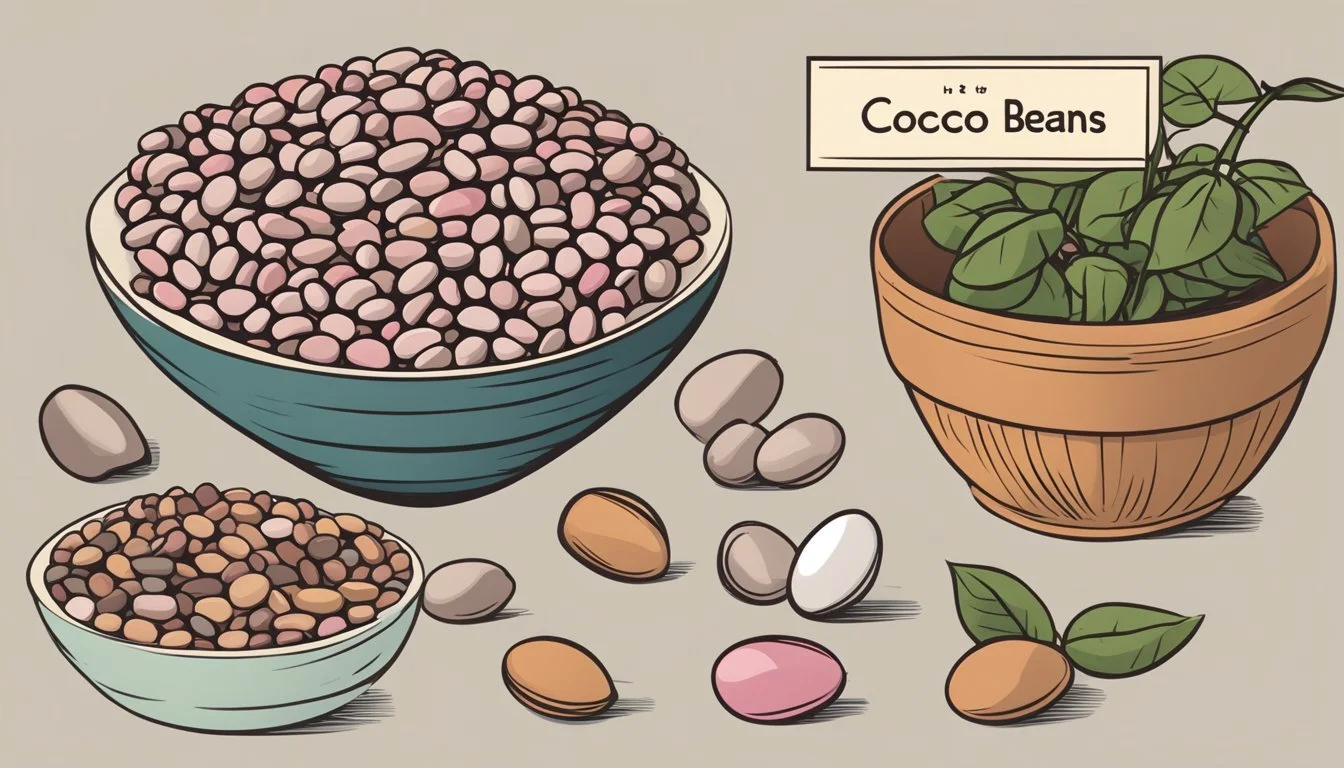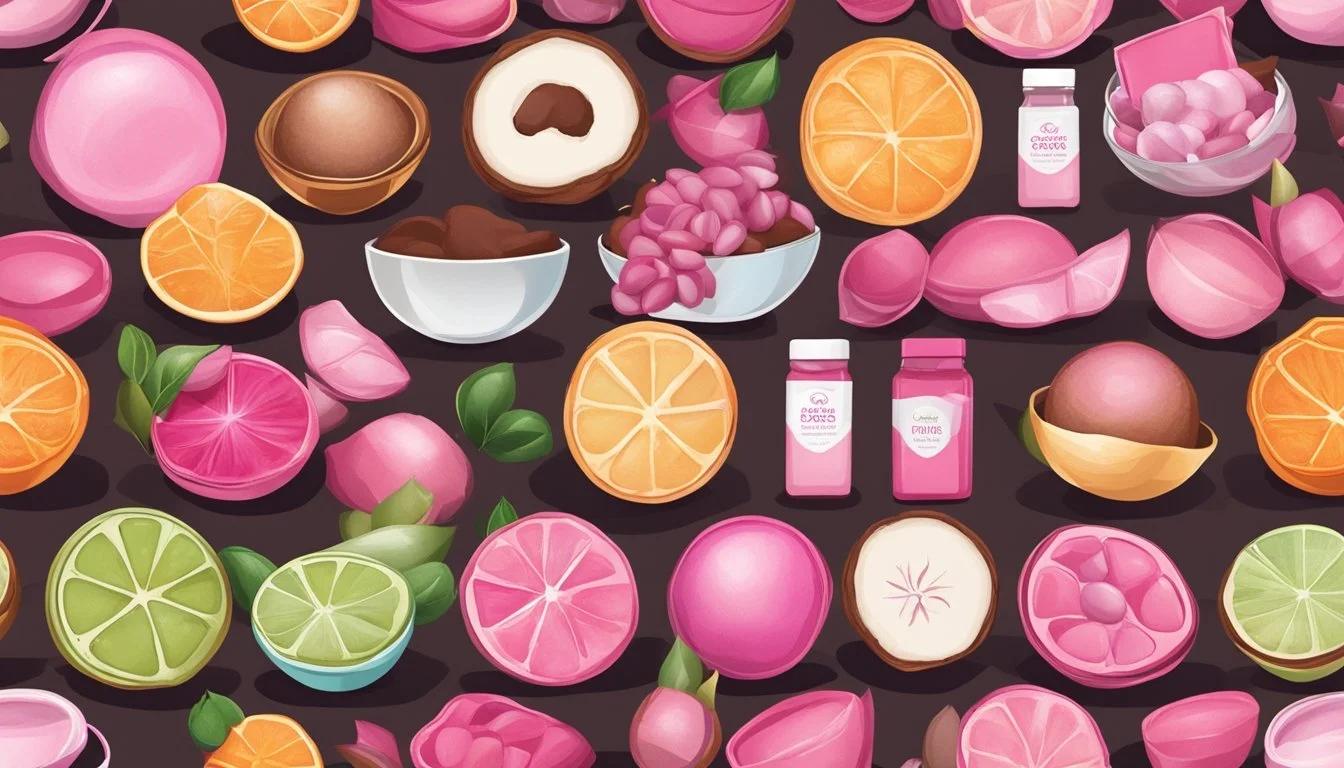Rose Coco Beans Substitutes
Best Alternatives for Every Recipe
For those navigating dietary restrictions or seeking variety in their meals, finding suitable substitutes for rose coco beans can be essential. Black soybeans, a low-carb alternative, offer a similar texture and versatility, making them a perfect substitute in many dishes. They are especially beneficial for individuals following a keto diet, as they provide protein and fiber without the high carb count typical of many beans.
Another excellent substitute is the jackfruit seed, gaining popularity as a potential replacement due to its unique flavor and nutritional benefits. Jackfruit seeds can be used in recipes that call for rose coco beans, adding a touch of novelty and health benefits.
For those who enjoy experimenting in the kitchen, carob chips and toasted walnuts can provide an unexpected twist. These alternatives not only mimic the texture of rose coco beans but also bring their own distinctive taste and nutritional value, making meals both delicious and wholesome.
Understanding Rose Coco Beans
Rose coco beans, also known as Borlotti beans, are popular in many cuisines for their rich, nutty flavor and impressive nutritional benefits. They also possess a striking mottled appearance, often attracting attention in both dry and cooked form.
Nutritional Profile
Rose coco beans pack a punch when it comes to nutrition. They are an excellent source of protein, making them a valuable addition to vegan and vegetarian diets. Typically, a 100-gram serving provides about 7 grams of protein.
These beans are also rich in dietary fiber, aiding in digestion and promoting fullness. This makes them an ideal choice for weight management. On average, they contain around 25 grams of fiber per 100 grams.
In terms of carbohydrates, rose coco beans are a good source, offering about 60 grams per 100 grams. This makes them an effective energy source for those leading active lifestyles.
Additionally, they provide essential minerals like iron, potassium, and magnesium, which are crucial for various bodily functions.
Culinary Uses
Rose coco beans are incredibly versatile in the kitchen. In India, they are commonly used in curries, often simmered in rich tomato sauces with a blend of spices.
They are also a key ingredient in Mediterranean and Italian dishes, frequently found in soups and stews. These beans soak up flavors beautifully, making them a favorite in flavorful broths and sauces.
For a quick and nutritious snack, rose coco beans can be used to make hummus. This dip is not only high in protein and fiber but also gluten-free, catering to a variety of dietary needs.
Primary Substitutes for Rose Coco Beans
When looking for substitutes for Rose Coco beans, consider other beans that maintain similar textures and flavors, allowing for seamless integration into dishes. Each substitute brings unique characteristics that might alter the final dish subtly but effectively.
Borlotti Beans
Borlotti beans, also known as Cranberry beans, are the closest substitute for Rose Coco beans. They share a similar appearance and creamy texture. These beans are often used in Italian and Portuguese cuisines.
When cooking Borlotti beans, they may require longer simmering or pressure-cooking times compared to Rose Coco beans due to their slightly different density. Their nutty flavor and versatile nature make them excellent in stews, soups, and mixed bean dishes.
Kidney Beans
Kidney beans are a common and accessible substitute. They are known for their distinctive shape and reddish-brown color. These beans are typically larger than Rose Coco beans and have a firmer texture.
Kidney beans work well in chili, salads, and casseroles. They should be fully cooked before consumption to eliminate toxins. The flavor is somewhat earthier compared to Rose Coco beans, yet they still blend well in similar recipes.
Black Beans
Black beans introduce a different color and flavor profile. These beans are smaller and have a denser texture. They are frequently used in Latin American cuisine.
When replacing Rose Coco beans with black beans, note the color change in the dish. Black beans will need a similar simmering or pressure-cooking time. They add a mild, slightly sweet flavor and hold up well in dishes like soups, salads, and burritos.
Pinto Beans
Pinto beans are another good alternative. They have a speckled appearance and become a uniform light brown when cooked. Their creamy texture and mild flavor make them suitable for a wide range of dishes.
Pinto beans cook relatively quickly and can be used in almost any dish requiring Rose Coco beans, from refried beans to hearty soups. Their adaptability and common availability make them a practical substitute.
Secondary Substitutes and Their Culinary Contexts
When looking for alternatives to Rose coco beans, several other beans can serve well in various dishes. These substitutes offer different textures and flavors, making them suitable for specific culinary applications such as salads, soups, stews, and baked goods.
Chickpeas for Salads
Chickpeas are a versatile substitute, particularly in salads. Their firm texture holds well in a variety of salad types, from leafy greens to grain salads. They can be used whole or slightly mashed for a different mouthfeel. Rich in fiber and protein, chickpeas absorb dressings well and pair excellently with ingredients like tomatoes, cucumbers, and herbs.
Cooking time for dried chickpeas ranges from 45 to 60 minutes. Canned chickpeas are a quick alternative, requiring only rinsing and draining before use. This makes them convenient for last-minute salad preparations.
Lentils in Soups
Lentils are an excellent choice for soups, offering a slightly earthy flavor that complements a wide array of ingredients. They cook rapidly, typically within 20 to 30 minutes, making them convenient for quick meal preparations. Lentils also break down slightly during cooking, thickening the soup and adding a creamy consistency without the need for cream or flour.
Green or brown lentils are particularly useful in hearty vegetable soups or those with tomato puree. Their ability to absorb spices well makes them ideal for seasoned broths and spiced soups.
Cannellini Beans for Stews
Cannellini beans are a suitable substitute in stews, thanks to their creamy texture and mild flavor. They hold their shape well during long cooking times, typically 45 minutes to an hour, making them perfect for slow-cooked dishes. Cannellini beans pair well with meats such as chicken and beef, as well as vegetables like carrots and celery.
Their subtle taste will not overshadow the main flavors of the stew, allowing for a harmonious blend of all ingredients. When substituting, equal amounts can be used as with Rose coco beans.
Great Northern Beans in Baked Goods
Great Northern beans can be used in baked goods to add moisture and protein. Their mild flavor and smooth texture make them unobtrusive in recipes where beans are needed to blend seamlessly, such as brownies, cookies, and bean-based cakes. They can be pureed and incorporated into batters to provide a moist crumb and enhance the nutritional profile.
When substituting, use pureed Great Northern beans in equal quantities to flour or other ingredients specified in recipes. Their cooking time is around 45 to 60 minutes if starting from dried beans, but canned can also be used directly after rinsing.
Recipe Adaptations Using Bean Substitutes
Adapting recipes with bean substitutes requires mindful adjustments to spices and herbs, modifications in cooking techniques, careful attention to texture and consistency, and precise substitute ratios and measurements. These adjustments ensure that the final dish is both flavorful and texturally satisfying.
Adjusting Spices and Herbs
When substituting beans like Rose coco beans with alternatives such as pinto beans, kidney beans, or cannellini beans, it’s important to consider spices and herbs. Pinto beans pair well with chili powder and cumin, enhancing their natural earthiness. Garlic and onion are versatile and complement most bean varieties.
For kidney beans, cinnamon and turmeric can add warmth and depth, while cannellini beans benefit from the fresh flavors of thyme and parsley. Balancing these spices and herbs can elevate the dish and ensure that the substitute bean integrates seamlessly into the recipe.
Modifying Cooking Techniques
Different beans require unique cooking techniques to maintain the desired flavor and texture. Rose coco beans typically require longer cooking times. For beans like mung beans or black-eyed peas, soaking them overnight can shorten the cooking time significantly.
Using a pressure cooker or Instant Pot can also be a game-changer. Adjusting cooking times and methods, like switching from boiling to simmering, ensures the substitute beans do not overcook or become mushy. These techniques help maintain the ideal consistency and flavor profile.
Texture and Consistency Considerations
Texture plays a critical role in how well bean substitutes work in a recipe. Rose coco beans have a creamy texture that some substitutes like butter beans or black beans can mimic. It's essential to consider the final dish's texture - soups may benefit from softer beans, while salads might require firmer beans.
Garlic and onion can add an extra layer of texture when cooked with beans. Integrating these ingredients can help in striking that perfect balance. By monitoring cooking times and methods, you ensure the beans deliver the right mouthfeel.
Substitute Ratios and Measurements
Accurate ratios and measurements are crucial for successful substitutions. When swapping out Rose coco beans, use an equal volume of substitutes such as pinto beans or kidney beans. For a recipe calling for one cup of Rose coco beans, one cup of the chosen substitute should generally suffice.
If the dish involves pureeing the beans, like in a dip or spread, adjust liquid components accordingly. For instance, cannellini beans might require less added liquid due to their higher moisture content. Precise measurements ensure the dish maintains its original flavor and consistency.
Ensuring these modifications align with the specific bean substitute will help you achieve desired results in your cooking.
Diet-Specific Bean Alternatives
When searching for substitutes for Rose coco beans, it's important to consider dietary restrictions and preferences, including gluten-free, low-carb, vegan, and vegetarian options. Each diet requires unique alternatives that provide similar nutritional benefits.
Gluten-Free Alternatives
For those adhering to a gluten-free diet, there are several options to replace Rose coco beans. Quinoa and buckwheat are excellent choices because they are naturally gluten-free grains high in protein and fiber. They help maintain the nutritional profile of meals.
Rice and sorghum are also gluten-free and can be used in various culinary applications. These grains are versatile substitutes, offering different textures. Sorghum, in particular, has a slightly chewy texture that can be a satisfying replacement in soups and stews.
Low-Carb Options
Individuals following a low-carb diet can turn to black soybeans and lentils. Black soybeans, containing around 4 net carbs per ¼ cup, are a popular choice due to their low carbohydrate content and high protein levels.
Cauliflower is another low-carb substitute. When cooked and mashed, it can mimic the creamy texture of beans, making it suitable for casseroles and dips. Both black soybeans and cauliflower provide essential nutrients while keeping carb intake low, thus fitting seamlessly into a ketogenic lifestyle.
Vegan and Vegetarian Choices
For those on vegan or vegetarian diets, incorporating high-protein substitutes is key. Chickpeas and lentils are rich in protein and fiber, making them ideal replacements for Rose coco beans. Chickpeas can be used in salads, stews, and even made into hummus.
Tofu is another excellent plant-based alternative, offering a versatile texture that can absorb flavors well. It can be added to a variety of dishes, from stir-fries to soups. These options ensure that meals are not only nutritious but also aligned with vegan and vegetarian dietary needs.
By choosing these diet-specific alternatives, one can maintain a balanced diet while adhering to personal dietary restrictions.
Innovative Substitutes and New Trends
As consumers seek healthier and more sustainable alternatives, several innovative substitutes for rose coco beans have emerged. This section explores superfood alternatives, emerging legume varieties, and popular substitutes on social media platforms.
Superfood Alternatives
Superfoods like quinoa and chia seeds have gained popularity as substitutes for rose coco beans. Quinoa, a complete protein, boasts high nutritional value and a pleasant texture when cooked. It can be used in soups, salads, and even as a rice alternative.
Chia seeds, known for their omega-3 fatty acids and fiber content, provide a unique texture that works well in puddings and baked goods. These superfoods not only offer health benefits but also cater to gluten-free and vegan diets, making them versatile options in modern kitchens.
Emerging Legume Varieties
Innovative legume varieties are also standing out as viable substitutes. Jackfruit seeds, for instance, have been spotlighted for their similar texture to beans and nutritional benefits. Often used in South Asian cuisines, jackfruit seeds deliver a slightly nutty flavor.
Another notable mention is lupin beans, which are high in protein and fiber. Already popular in Mediterranean diets, lupin beans are becoming more widely available and appreciated for their versatility in various dishes, from salads to protein-rich snacks.
Substitutes Popular on Social Media
Social media platforms like Instagram, Facebook, Pinterest, and Twitter play a significant role in popularizing new substitutes. Recipes featuring lentils, black beans, and chickpeas often trend, showcasing these legumes’ adaptability in diverse culinary creations.
Blogs frequently highlight these substitutes, with influencers sharing innovative recipes and health benefits. Black beans and chickpeas, in particular, are praised for their protein content and functionality in recipes ranging from hummus to veggie burgers. Such visibility on social media helps drive consumer interest and adoption of these substitutes in everyday cooking.








